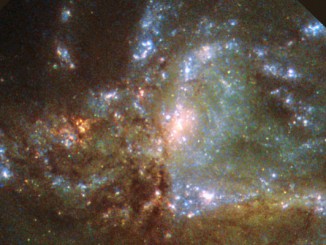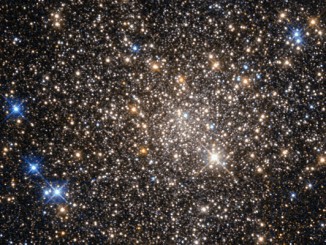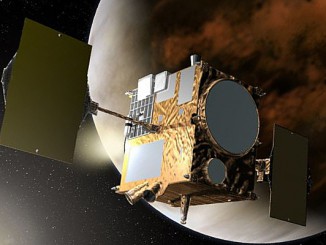
New Horizons reveals Pluto’s widespread water ice
Data from NASA’s New Horizons spacecraft point to more prevalent water ice on Pluto’s surface than previously thought. Water ice is Pluto’s crustal “bedrock,” the canvas on which its more volatile ices paint their seasonally changing patterns. The new false-colour image is derived from observations in infrared light by the probe’s Ralph/Linear Etalon Imaging Spectral Array.









